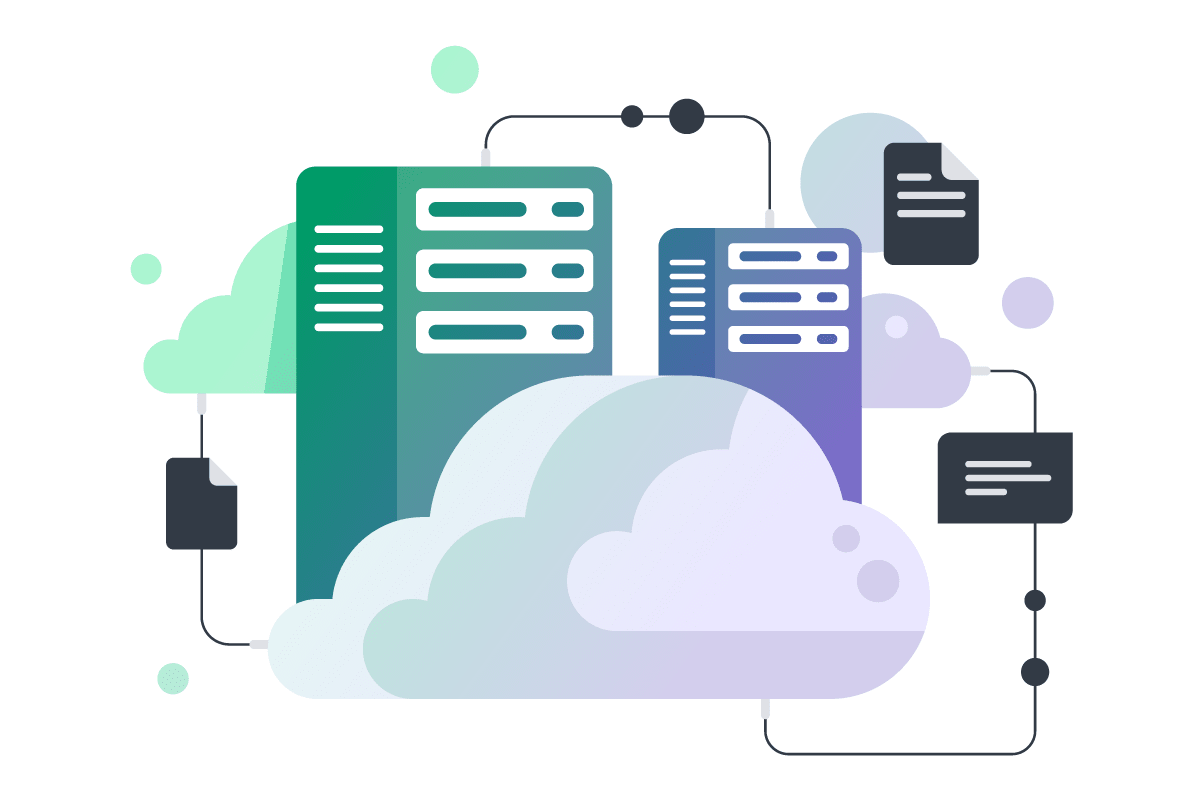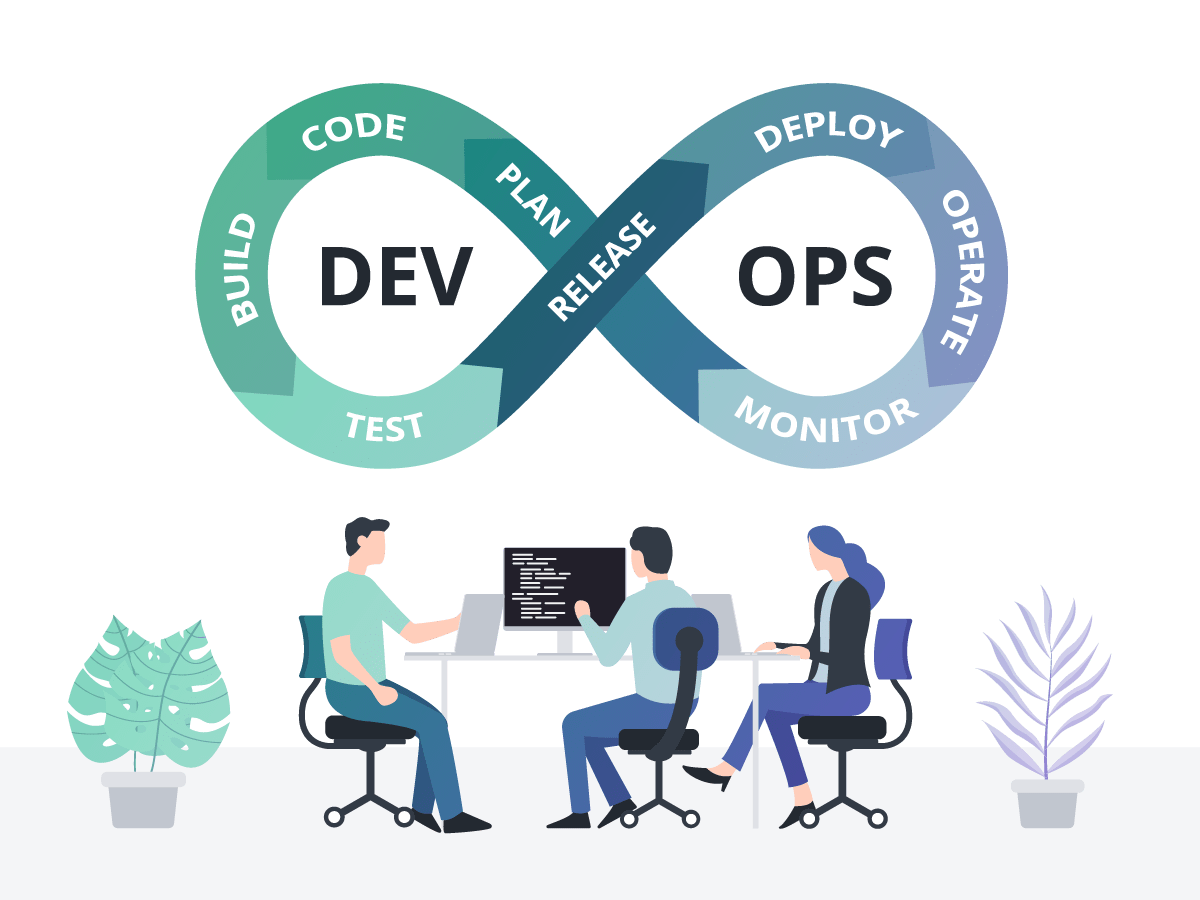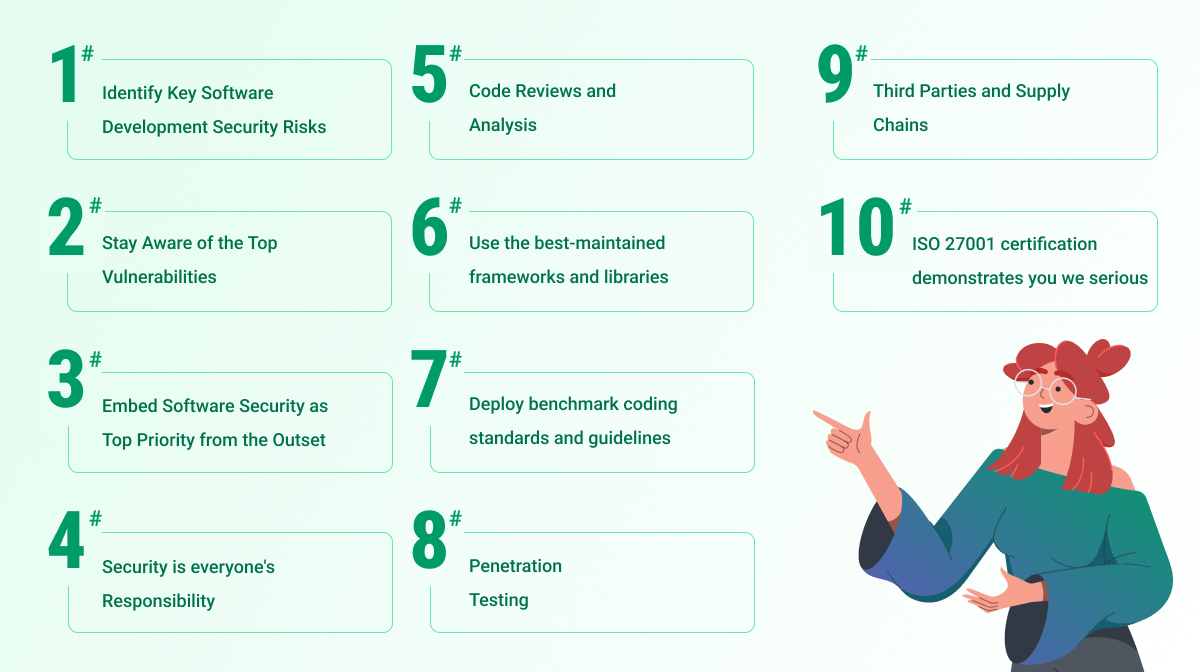Here's the reality: According to Cloud Ratings' meta-analysis of 234 software ROI studies, technology investments deliver an average 41% annualized ROI, with every $1.00 invested yielding $2.78 in three years. However, the Standish Group's 2020 CHAOS Report reveals that 66% of technology projects end in partial or total failure, with 31% canceled outright. The Consortium for IT Software Quality estimates that unsuccessful development projects cost US firms $260 billion annually, with operational failures from poor quality software totaling $1.56 trillion.
You're facing technology decisions right now that will impact your business for the next three years. The question isn't whether to adopt new technologies—it's which ones will drive your specific business outcomes and which ones will drain your resources.
As we dive into this topic, we will explore the foundational elements of modern software development, examine emerging technologies, and discuss the pivotal role of data analytics and cybersecurity. Furthermore, we will guide you through selecting the right technology stack for your business needs and provide an insight into the future of software development technologies.
If you're a CEO, CTO, or department head responsible for technology strategy, McKinsey research shows you're dealing with three critical pressures:
- Speed pressure: Your competitors are moving faster, and customers expect continuous innovation
- Budget pressure: Every technology dollar must show measurable business impact (McKinsey found that only 45% of digital transformations deliver expected profit results)
- Risk pressure: BCG estimates that 70% of digital transformation efforts fall short of targets, and McKinsey research shows that 17% of large IT projects threaten company survival
This guide addresses all three by focusing on technologies that deliver proven business results, not just technical capabilities.

Understanding the Basics of Modern Application Development
Software development is crucial in driving innovation, efficiency, and competitiveness in modern business. Business leaders must have a foundational understanding of the key concepts and methodologies underpinning today's software development practices.
Agile Methodology and DevOps: Core Concepts
Agile Methodology: Agile is a project management and product development approach emphasizing flexibility, customer satisfaction, and continuous improvement. It revolves around collaborative efforts and adaptive planning, allowing for rapid and flexible responses to change. Fundamental principles of Agile include iterative development, regular feedback, and cross-functional team collaboration.
DevOps: DevOps is a set of practices that combines development (Dev) and IT operations (Ops). It aims to shorten the development lifecycle and provide continuous delivery with high software quality. DevOps encourages a culture of collaboration, automation of processes, and integration between software developers and IT professionals.
Role in Business Success
Modern approach to software development, mainly through Agile and DevOps, enhances a business's ability to respond to market changes, meet customer needs quickly, and innovate faster. These methodologies foster a culture of continuous improvement, which is vital in a technology-driven marketplace.
Comparison of Traditional vs. Modern Software Development Approaches
| Aspect | Traditional Development | Modern Development (Agile/DevOps) |
|---|---|---|
| Approach | Sequential and rigid | Iterative and flexible |
| Focus | Process and tools | Individuals and interactions |
| Feedback Loop | Longer and less frequent | Shorter and continuous |
| Change Management | Resistant to change | Embraces change |
| End-Product Testing | At the end of development | Continuous throughout the process |
| Collaboration | Siloed departments | Cross-functional and integrated teams |
Understanding these basics helps business leaders appreciate how software development strategies directly impact their business's agility, responsiveness, and success.
Programming Languages: The Building Blocks of Digital Innovation
Behind every piece of software, there's meticulously crafted code written in a specific programming language. These languages, with their unique syntax and semantics, are the unsung heroes of the digital age, enabling developers to bring ideas to life.
- Java: Known for its "Write Once, Run Anywhere" philosophy, Java has been a staple in software development for decades. Its platform independence and robustness make it a favorite for enterprise applications and Android app development.
- Python: With its intuitive syntax and versatility, Python has seen a meteoric rise as a popular programming language. From web development with Django to data science with Pandas, Python's applications are vast and varied.
- JavaScript: The lifeblood of modern web development, JavaScript powers dynamic and interactive web applications. Frameworks like React and Angular are reshaping how we experience the web.
- C++ and C#: These languages, with their roots in the foundational C language, are known for their performance and versatility. While C++ finds its strength in system/software development, C# shines in Microsoft and . NET.
- Ruby: With its elegant syntax and robust Rails framework, Ruby has carved a niche in web app development, emphasizing convention over configuration.
- PHP: A stalwart in complex web applications, PHP powers a significant portion of the internet. Known for its server-side scripting capabilities, it's the backbone of many dynamic websites and applications. With frameworks like Laravel and Symfony, PHP offers software engineers a blend of power and flexibility, making it a go-to for many web-based projects.
- Kotlin: Kotlin has emerged as a modern, concise, and safe language, especially for Android app development. It's fully interoperable with Java and offers enhanced features like null safety and extension functions, making Android development more efficient and enjoyable.
- Swift: Developed by Apple, Swift is the go-to language for iOS app development. Known for its clean syntax, it makes coding for iOS, macOS, watchOS, and tvOS more intuitive and fun. Swift's performance, safety features, and active community support make it a top choice for Apple's ecosystem.
- Flutter: Flutter, developed by Google, is an open-source UI software development kit. It's used for crafting high-quality, natively compiled mobile, web, and desktop applications from a single codebase. Flutter's hot reload feature and extensive widget library make it a popular choice for rapid and dynamic mobile app development.
- React Native: An open-source framework by Facebook, React Native allows for building mobile apps using JavaScript and React. It's known for its ability to create rich and engaging user interfaces and provides the capability to write modules in native code for performance-critical components.
- Xamarin: Xamarin, a .NET framework from Microsoft, enables developers to create mobile applications for iOS, Android, and Windows using C#. It allows code sharing across platforms, making it a cost-effective choice for businesses developing cross-platform applications with a native look and feel.
- Ionic: Ionic is an open-source UI toolkit for building performative, high-quality mobile and desktop apps using web technologies like HTML, CSS, and JavaScript. It's known for its rich set of pre-designed components, plugins, and extensive community support.
The beauty of programming languages lies in their evolution. As the tech landscape shifts, these languages adapt, introducing new features, optimizations, and paradigms, ensuring they remain relevant in an ever-changing industry.

Technologies and Frameworks: The Unsung Heroes of Efficient Development
In the vast world of software development, frameworks act as catalysts, streamlining and simplifying the coding process. By offering pre-written code structures for routine tasks, they reduce redundancy and accelerate project timelines.
- React: A JavaScript library developed by Facebook, React has revolutionized front-end development. Its component-based architecture and virtual DOM make building dynamic user interfaces a breeze.
- Django: Riding on the coattails of Python's popularity, Django is a high-level web framework that emphasizes rapid development and clean, pragmatic design. Its "batteries-included" philosophy ensures developers have tools for the most common tasks at their fingertips.
- .NET Core: An evolution of the .NET framework, .NET Core is a cross-platform, open-source framework that enhances C#'s capabilities, making it suitable for everything from web applications to cloud-based solutions.
- Angular: Another gem in the JavaScript world is a platform and framework for building single-page client applications using HTML and TypeScript.
- Ruby on Rails: Often just called Rails, this server-side web application framework written in Ruby emphasizes convention over configuration and the DRY (Don't Repeat Yourself) principle.
With their structured approach and pre-built modules, frameworks reduce the time-to-market and ensure that the software adheres to best practices, leading to robust, scalable, and maintainable applications.
Databases: The Heartbeat of Modern App Development
In today's digital era, where data drives decisions, databases are the guardians of this invaluable asset. As the backbone of applications, they ensure data is stored securely, retrieved efficiently, and managed effectively.
- Relational DBs: These databases, structured around tables, rows, and relationships, have been the mainstay for decades.
- MySQL: An open-source relational database, MySQL is renowned for its reliability and performance. It's the go-to choice for many web-based applications.
- PostgreSQL: Offering advanced features like table inheritance and function overloading, PostgreSQL combines traditional relational databases' power with NoSQL's flexibility.
- NoSQL DBs: Breaking away from the table-based structure, NoSQL databases offer flexibility and scalability.
- MongoDB: A document-oriented database, MongoDB stores data in JSON-like formats, making it intuitive and scalable. It's especially favored in applications that require rapid, agile changes.
- In-memory DBs: For applications that demand lightning-fast data retrieval, in-memory databases like Redis store data in the system's main memory (rather than on disk) for quicker access.
Databases, in essence, ensure that the vast amounts of data generated and consumed in the digital age have a structured, secure, and efficient storage mechanism, powering applications from the backend.
Development Environments: Where Ideas Take Shape
Just as an artist needs a studio or a scientist needs a lab, software developers require a specialized environment to bring their digital visions to life.
- Visual Studio: Developed by Microsoft, Visual Studio is a powerhouse IDE supporting multiple languages and platforms. Its intuitive interface, extensive library support, and integrated debugger make it a favorite among many developers.
- Eclipse: An open-source IDE, Eclipse is known for its modular architecture. Catering to a wide array of programming languages, it offers developers flexibility and a rich set of plugins to enhance functionality.
- IntelliJ IDEA: Tailored for Java development, IntelliJ IDEA, developed by JetBrains, offers features like deep code understanding and intelligent code completion, making Java development a breeze.
- NetBeans: Another contender in the Java world, NetBeans is open-source and offers tools not just for Java but also for HTML5, PHP, and more.
- Atom & VS Code: For developers who prefer lightweight and highly customizable environments, Atom and Visual Studio Code offer a blend of simplicity and power, enriched by a vast extensions marketplace.
Integrated Development Environments (IDEs) amalgamate the various tools a developer needs – from writing code and debugging to version control and testing – into a unified platform. They optimize the development workflow, ensuring efficiency and consistency throughout the software creation process.
Version Control: The Backbone of Collaborative Software Development
In the intricate dance of software development, where multiple developers contribute to a single project, version control systems stand as the choreographers. They ensure every step and change is in harmony, preventing missteps and overlaps.
- Git: A distributed version control system, Git allows multiple developers to work on a project simultaneously without stepping on each other's toes. Every developer has a complete copy of the project, ensuring they can work independently and merge changes seamlessly.
- Branching and Merging: One of Git's standout features, branching allows developers to create separate 'branches' for new features or tests, which can later be merged into the main project.
- Commit History: Every change, every addition, is tracked. This ensures accountability and offers a clear history of the project's evolution.
- GitHub: More than just a hosting service for Git repositories, GitHub is a collaborative platform. With features like pull requests, issue tracking, and code reviews, it fosters community-driven development and open-source contributions.
- Bitbucket & GitLab: While GitHub might be the most popular, platforms like Bitbucket and GitLab offer similar functionalities, with added features like built-in continuous integration and private repositories.
Version control isn't just about tracking changes; it's about fostering collaboration, ensuring code quality, and providing a safety net when things go awry.
10 Essential Soft Skills for Tech Professionals
Technical expertise is only part of the equation in software development. The ability to collaborate, adapt, and communicate effectively is just as critical. The following soft skills play a vital role in building successful software teams1:
- Communication: Clear articulation of ideas and project requirements.
- Teamwork: Collaboration across functions for seamless development.
- Problem-Solving: Analyzing and resolving technical and strategic challenges.
- Adaptability: Adjusting to evolving technologies and industry trends.
- Time Management: Prioritizing tasks effectively to meet deadlines.
- Empathy: Understanding user needs and designing human-centered solutions.
- Curiosity: A mindset of continuous learning and improvement.
- Conflict Resolution: Navigating disagreements to maintain productive workflows.
- Resilience: Overcoming setbacks and maintaining progress.
- Leadership: Guiding teams, making decisions, and fostering innovation.
As automation and AI reshape technical roles, soft skills will become even more valuable, helping developers navigate an increasingly complex digital landscape.

Cloud Computing: Elevating the Digital Landscape
The advent of cloud computing has been nothing short of a revolution. It has democratized technology access, allowing startups and global enterprises to leverage world-class infrastructure without the hefty upfront costs.
- Amazon Web Services (AWS): A behemoth in the cloud space, AWS offers many services, from elemental computing power and storage to advanced machine learning and analytics tools. Its global network of data centers ensures reliability and scalability.
- Google Cloud Platform (GCP): Known for its high-performance computing, data storage, and machine learning services, GCP is a favorite among businesses looking to harness the power of their data.
- Microsoft Azure: Beyond just cloud services, Azure offers solutions for AI, analytics, IoT, and more. Its integration with Microsoft's software products makes it a go-to choice for many enterprises.
- Hybrid Cloud: For businesses not ready to go all-in on the cloud, hybrid solutions offer a mix of on-premises, private cloud, and third-party public cloud services, allowing data and applications to be shared seamlessly.
The cloud is more than just servers in a data center; it's a paradigm shift in how businesses think about IT resources. It offers scalability, flexibility, and cost-effectiveness, making it a cornerstone of modern digital infrastructure.
DevOps Tools: Streamlining Software Lifecycle
DevOps isn't just a methodology; it's a cultural shift. DevOps ensures faster delivery, higher efficiency, and more reliable software by bridging the gap between development and operations. Central to this approach are the tools that automate and streamline various software lifecycle stages.
- Docker: In the world of software, consistency is critical. With its containerization technology, Docker ensures that an application runs the same, irrespective of where it's deployed. Docker eliminates the "it works on my machine" problem by packaging an application and its dependencies together.
- Jenkins: Continuous Integration (CI) and Continuous Deployment (CD) are pillars of DevOps. Jenkins, an open-source automation server, facilitates this by automating the building, testing, and deployment of applications, ensuring rapid delivery and high quality.
- Kubernetes: As applications grow, managing them can become a challenge. Kubernetes, an open-source container orchestration platform, automates applications' deployment, scaling, and management, ensuring they run efficiently and reliably.
- Other Tools: Tools like Ansible for configuration management, Prometheus for monitoring, and Terraform for infrastructure as code, further enhance the DevOps workflow.
DevOps tools are more than just software; they're enablers, driving collaboration, automation, and innovation.

Emerging Tech Stack: The Frontier of Innovation in 2025
The digital realm is in a perpetual state of evolution, with groundbreaking technologies constantly emerging, promising to redefine how we interact, work, and even think. These emerging technologies, while nascent, hold the potential to revolutionize industries, create new paradigms, and shape the future.
AI and Machine Learning
AI and ML are playing a transformative role in software development. AI algorithms can automate complex development tasks, enhance coding efficiency, and predict potential issues before they occur. Machine Learning, a subset of AI, enables systems to learn and improve from experience without being explicitly programmed. A McKinsey study shows that software developers can complete coding tasks up to twice as fast with generative AI
Key Benefits:
- Automated code reviews and error detection.
- Predictive analytics for customer behavior and market trends.
- Enhanced personalization in software applications.
Considerations:
- Investing in AI/ML requires resources for training and implementation.
- Ethical considerations in data usage and AI decision-making.
Cloud Computing
Cloud Computing offers scalable and flexible solutions for software development. It allows businesses to use internet-based resources, reducing the need for extensive physical infrastructure.
The cloud is no longer just about storage and computing power. It has evolved into an ecosystem that supports AI-driven applications, blockchain security, and sustainability initiatives. Major providers like AWS, Google Cloud, and Azure are focusing on energy-efficient data centers, carbon-neutral operations, and AI-powered workload optimization. Businesses adopting cloud solutions should consider these advancements as part of their long-term digital transformation strategy.
Key Benefits:
- Cost-effective scaling of resources based on demand.
- Easier collaboration and accessibility for distributed teams.
- Enhanced security and disaster recovery options.
Considerations:
- Requires a reliable and fast internet connection.
- Data security and privacy concerns in cloud environments.
IoT (Internet of Things)
IoT integrates physical objects into the digital ecosystem, offering new opportunities for software development. Businesses can create interconnected solutions that enhance user experience and operational efficiency by embedding software into everyday objects.
Key Benefits:
Considerations:
- Real-time data collection and analysis for informed decision-making.
- Opportunities for innovative product development.
- Enhanced customer engagement and experience.
- Increased complexity in development and maintenance.
- Security vulnerabilities with more connected devices.
Blockchain
Blockchain technology offers a decentralized and secure way to record transactions. It's mainly known for underpinning cryptocurrencies but has far-reaching applications in software development.
Key Benefits:
Considerations:
- Enhanced security and transparency in transactions.
- Reduction in fraud and unauthorized access.
- Streamlining of processes, reducing costs and time.
- Requires understanding of new paradigms for integration.
- Scalability and speed can be challenges in specific applications.
Augmented Reality (AR) & Virtual Reality (VR)
AR & VR are revolutionizing user interaction paradigms in software development. While AR enhances the real world with digital overlays, VR offers completely immersive digital experiences.
Key Benefits:
Considerations:
- Innovative ways to engage users and enhance customer experiences.
- Applications in training, education, and simulation.
- Opportunities for creating immersive marketing strategies.
- High initial development costs.
- It may require specialized hardware for end-users.
Quantum Computing
Quantum Computing is a cutting-edge technology that utilizes quantum mechanics to process information at unprecedented speeds, offering immense potential for software development.
Key Benefits:
Considerations:
- Ability to solve complex problems much faster than classical computers.
- Potential for significant advancements in cryptography, material science, and pharmaceuticals.
- Enhanced data analysis capabilities.
- Still in the early stages of development.
- Requires specialized knowledge and resources for development and integration.
5G Technology
5G Technology brings faster, more reliable internet connections, significantly impacting how software and applications are developed and used.
Key Benefits:
Considerations:
- Enhanced speed and connectivity for mobile and IoT devices.
- Opportunities for more complex, data-intensive applications.
- Improved user experiences with reduced latency.
- Requires infrastructure upgrades and investment.
- Coverage and availability may vary by location.
These technologies, each with their unique advantages and considerations, are fundamental in shaping the future of application development. By understanding and leveraging them, business leaders can position their companies at the forefront of innovation and market competitiveness.
Design Principles for Ethical & Sustainable Software
- User-Centric: Prioritize privacy, security, and user well-being.
- Inclusive & Accessible: Ensure technology serves all users, regardless of ability or background.
- Long-Term Impact: Assess environmental and societal consequences of software choices.
Implementing Sustainable & Ethical Practices
- Ethical AI Development: Design AI systems with fairness, transparency, and accountability at the core.
- Sustainable Software Engineering: Integrate sustainability metrics, such as energy efficiency and resource optimization, into software design.
- Carbon Footprint Tracking: Emerging tools allow developers to measure and reduce the environmental impact of software.
The Future of Responsible Software Development
As awareness grows, new trends are shaping the next phase of ethical tech innovation2:
- Ethical AI Regulations are becoming a key focus for governments and organizations.
- Alignment with Sustainable Development Goals (SDGs) ensures software supports global sustainability efforts.
- Energy-Efficient Computing is pushing developers to optimize cloud and on-premise software for minimal environmental impact.

The Impact of Big Data and Analytics
In the world of software development, the influence of big data and analytics cannot be overstated. These technologies have fundamentally changed how businesses collect, process, and utilize information, leading to more informed decision-making and strategic planning.
Transforming Development Strategies with Big Data
Big Data refers to the vast volume of data businesses collect from various sources, including social media, transaction records, and IoT devices. When processed and analyzed effectively using Business Intelligence tools like Elasticsearch and PowerBI, this data can reveal patterns, trends, and previously inaccessible insights.
Key Benefits:
Considerations:
- Informed decision-making based on data-driven insights.
- Personalization of software products to meet customer preferences.
- It enhanced predictive modeling for market trends and consumer behavior.
- Requires robust infrastructure for data storage and processing.
- Data privacy and security must be prioritized.
Role of Analytics in Optimization and Decision-Making
Analytics involves the systematic analysis of data to derive actionable insights. In software development, analytics can optimize processes, enhance product features, and improve user experience.
Key Benefits:
Considerations:
- Enhanced understanding of user engagement and behavior.
- Ability to track and measure the success of new features or updates.
- Real-time feedback for continuous improvement of software products.
- Integrating analytics requires careful planning to ensure relevance and accuracy.
- Balancing data collection with user privacy concerns.
By integrating big data and analytics into software development, businesses can enhance their product offerings and gain a deeper understanding of their market and customers. This leads to more strategic decision-making and a significant competitive advantage.

Choosing the Right Technology Stack
Selecting the appropriate technology stack is critical for the success of any software development project. The tech stack refers to the technologies used to build and run a software application, including programming languages, frameworks, databases, and server infrastructure.
Factors to Consider
When choosing a tech stack, several factors need to be taken into account:
- Project Requirements: Understand the specific needs and requirements of your project. This includes considering the type of application, expected traffic, scalability needs, and security considerations.
- Team Expertise: Choose technologies that align with the skills and experience of your development team. Familiarity with the technology stack can significantly impact development speed and quality.
- Community Support and Ecosystem: Opt for technologies with strong community support and a robust ecosystem. This ensures access to libraries, tools, and resources for efficient development.
- Future Scalability and Maintenance: Consider how easy it is to scale and maintain the technologies chosen, especially as your business grows and evolves.
Aligning Technology with Business Objectives
It's essential to align the chosen technology stack with your overall business objectives:
- Cost-Efficiency: Balance the cost of technology choices with their value to your business. Consider both initial development costs and long-term maintenance expenses.
- Time to Market: Some technologies can speed up development, allowing for quicker deployment and faster time to market.
- Innovation Potential: Choose technologies that allow innovation and stay ahead of market trends.
Key Considerations Summary
- Usability and User Experience: Ensure the technology stack supports creating user-friendly and engaging applications.
- Performance and Reliability: Select technologies known for their performance and reliability to ensure a smooth user experience.
- Compliance and Security: Be mindful of compliance requirements and security implications associated with your technology choices.
Choosing the right technology stack is a strategic decision that impacts the development process and the long-term success and adaptability of your software application.
Steps to Implementing Security in Software Development

The Future of Software Development Technologies
Looking ahead, the next generation of software development will be shaped by several key forces:
- AI-Driven Code Development: AI-powered tools will assist in writing, debugging, and optimizing code.
- Low-Code and No-Code Expansion: These platforms will empower businesses to build applications without deep coding expertise.
- Sustainability as a Priority: Energy-efficient software, carbon tracking, and eco-friendly computing will become key industry benchmarks.
- Ethical AI & Regulatory Compliance: Governments and tech leaders will work to establish AI transparency and responsible data usage.*
To thrive in this constantly evolving industry, businesses must prioritize adaptability, innovation, and responsibility, ensuring their software aligns with both technological advancements and ethical considerations.
As we look toward the future, it's evident that software development technologies will continue to evolve, bringing new opportunities and challenges. Staying informed and adaptable is crucial for businesses to thrive in this dynamic environment.
Preparing for Continuous Change
For business leaders, the ability to adapt to technological advancements is critical. This includes:
- Investing in Continuous Learning: Encourage and facilitate ongoing learning opportunities for your teams to keep up with technological changes.
- Fostering a Culture of Innovation: Create an environment where experimentation and innovation are encouraged.
- Strategic Planning: Regularly review and update your technology strategy to align with emerging trends and business goals.
The future of software technologies is not just about embracing NEW technologies; it's about creating a flexible, forward-thinking approach that enables businesses to leverage these advancements for growth and success.

Final Word
Software development is evolving faster than ever, driven by innovations in AI, cloud computing, and sustainable technology. Businesses that embrace these advancements will gain a competitive edge, delivering more efficient, secure, and impactful digital solutions.
However, success in this evolving landscape isn’t just about technology—it’s about strategy, adaptability, and ethical responsibility. Leaders must prioritize the right tech stack, invest in emerging trends, and foster collaborative, forward-thinking teams to stay ahead.
Ready to future-proof your software development strategy? Whether you're scaling your business, integrating AI, or optimizing for sustainability, Softjourn can help. Let’s build the future together. Contact us today to explore the possibilities.












